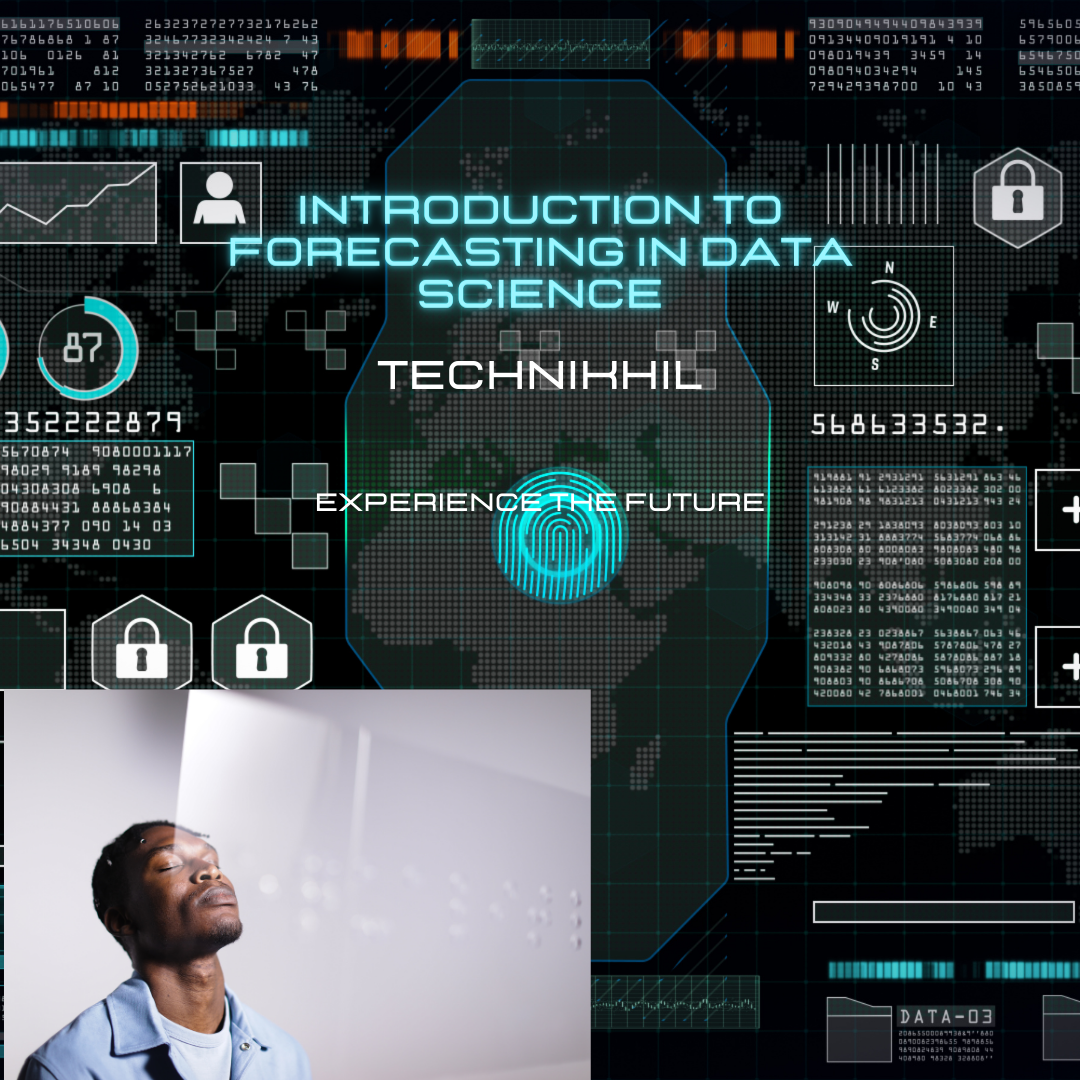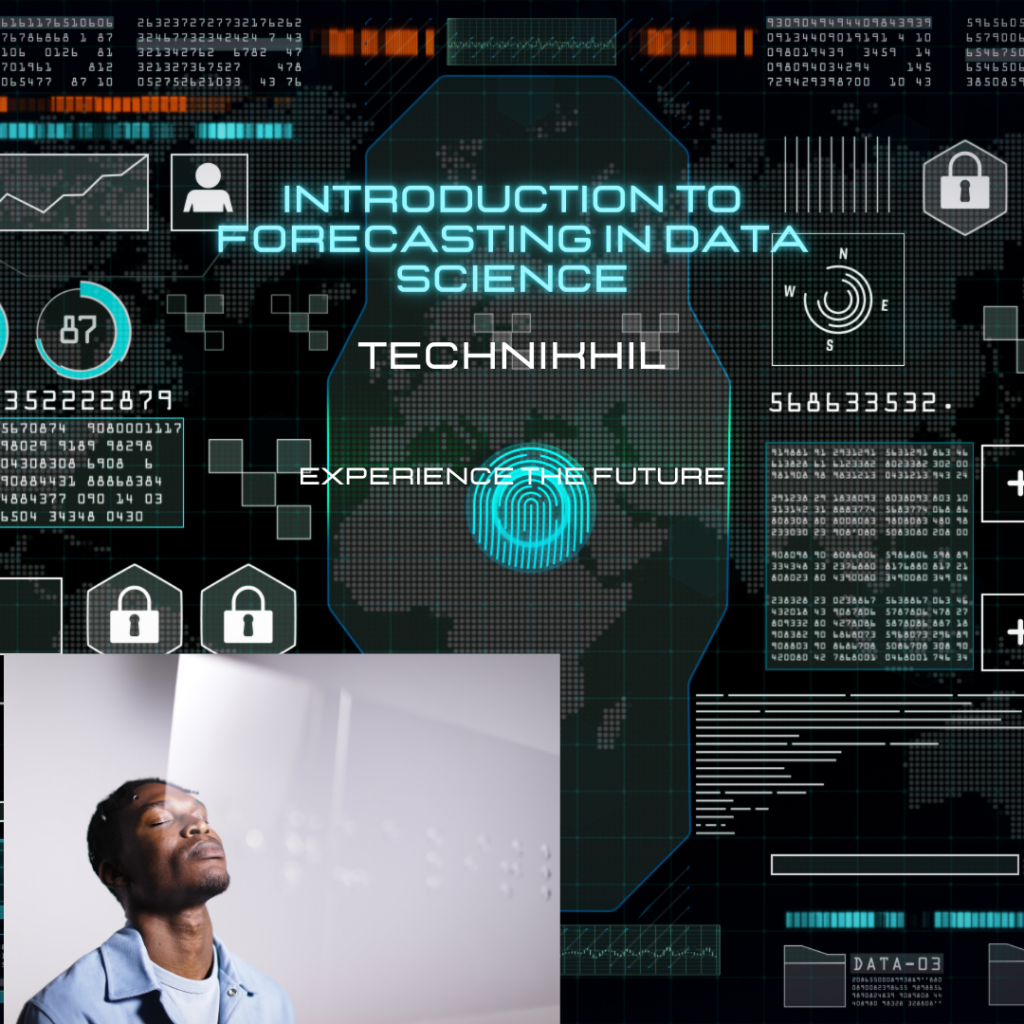Unlocking the Power of Prediction: An Introduction to Forecasting in Data Science
In the vast landscape of data science, one key element that stands out is the art and science of forecasting. It is a captivating journey into the realm of predicting future trends, outcomes, and behaviors based on historical data. As businesses and organizations increasingly rely on data to make informed decisions, forecasting plays a pivotal role in providing valuable insights that shape strategies and enhance overall efficiency.
Understanding the Essence of Forecasting:
At its core, forecasting is the process of making predictions about future events by analyzing historical data and trends. Whether it’s predicting stock prices, weather conditions, sales figures, or even healthcare outcomes, the goal of forecasting in data science is to uncover patterns and relationships that can be used to make accurate predictions.
The process involves using various statistical models, machine learning algorithms, and mathematical techniques to identify underlying patterns and trends in data. By leveraging the power of algorithms, data scientists can develop models that capture the inherent complexities of the data and generate predictions with a high degree of accuracy.

The Importance of Forecasting in Decision-Making:
In the fast-paced and dynamic world we live in, businesses and organizations need to stay ahead of the curve to remain competitive. Forecasting, in this context, becomes a strategic tool that aids decision-makers in anticipating future scenarios and planning accordingly.
Take, for instance, the retail industry. By analyzing historical sales data, a retailer can predict consumer demand for certain products, enabling them to optimize inventory levels, streamline supply chains, and ultimately maximize profits. Similarly, in the financial sector, forecasting is crucial for predicting market trends, enabling investors to make informed decisions about where to allocate their resources.
Types of Forecasting:
-
Time Series Forecasting:
- Description: Time series forecasting involves predicting future values based on past observations. This is particularly useful for data with a temporal component, such as stock prices, weather data, or monthly sales figures.
- Techniques: Methods like moving averages, exponential smoothing, and autoregressive integrated moving average (ARIMA) models are commonly employed.
-
Causal Forecasting:
- Description: Causal forecasting explores the cause-and-effect relationships between different variables. It helps in understanding how changes in one variable can influence another.
- Techniques: Regression analysis and econometric models are often used to identify and quantify the relationships between variables.
-
Machine Learning Forecasting:
- Description: Machine learning techniques bring a new dimension to forecasting by automatically learning patterns and dependencies within data. These techniques are highly effective for complex and non-linear relationships.
- Techniques: Neural networks, deep learning models, support vector machines, and random forests are popular choices.
-
Qualitative Forecasting:
- Description: This type of forecasting relies on expert opinions, market research, and subjective inputs. It is often used when historical data is limited or unreliable.
- Techniques: Delphi method, market research, and expert panels are commonly employed in qualitative forecasting.
-
Quantitative Forecasting:
- Description: Quantitative forecasting is based on numerical data and statistical models. It aims to provide objective predictions using historical data and mathematical models.
- Techniques: Besides time series and causal forecasting, quantitative methods include trend analysis, extrapolation, and simulation.
Tools and Techniques in Forecasting:
-
Statistical Tools:
- Description:Traditional statistical methods are often used for time series forecasting and trend analysis.
- Tools:
-
- R: An open-source statistical programming language.
- Python: Libraries like StatsModels and NumPy provide a rich set of tools for statistical forecasting.
- Excel: Offers built-in functions for statistical analysis and forecasting.
-
Machine Learning Tools:
- Description: With the rise of machine learning, various tools and frameworks facilitate the application of complex algorithms.
- Tools:
-
- Scikit-Learn: A machine learning library for Python that includes various algorithms for regression and time series analysis.
- TensorFlow and PyTorch:Popular deep learning frameworks for implementing neural networks.
- H2O.ai: Provides an open-source software platform for data analysis.
-
Forecasting Software:
- Description:Specialized software simplifies the forecasting process and often provides user-friendly interfaces.
- Tools:
-
- SAS Forecast Studio: A comprehensive forecasting solution that supports both traditional and advanced forecasting methods.
- IBM SPSS: Offers statistical analysis, data mining, and machine learning capabilities for forecasting.
- Tableau: While known for visualization, Tableau also has forecasting features.
-
Time Series Databases:
- Description: Databases designed to handle time-series data efficiently, crucial for time-based forecasting.
- Tools:
-
- InfluxDB: A high-performance, distributed, and scalable time-series database.
- Prometheus: An open-source monitoring and alerting toolkit with a time-series database.
-
Forecasting APIs:
- Description:Application Programming Interfaces (APIs) provide pre-built models and services for quick integration into applications.
- Tools:
-
- Amazon Forecast API: Allows developers to build time-series forecasting models using machine learning.
- Google Cloud AI Platform: Provides APIs for building and deploying machine learning models, including forecasting.
The Future of Forecasting:
As we stand on the cusp of a data-driven era, the role of forecasting in data science is set to become even more integral. With the advent of big data, IoT devices, and advancements in artificial intelligence, the volume and complexity of data continue to grow exponentially. This influx of data presents both challenges and opportunities for data scientists, pushing the boundaries of what is possible in terms of prediction accuracy and model complexity.
The integration of forecasting into real-time decision-making processes is a trend that is gaining momentum. Businesses are increasingly looking for ways to leverage predictive analytics to make instantaneous decisions, respond to market changes in real-time, and stay ahead of the competition.
Conclusion:
In conclusion, forecasting in data science is a captivating journey into the future, powered by the insights gleaned from the past. As organizations strive to navigate an increasingly complex and uncertain world, the ability to predict future trends and outcomes becomes a strategic advantage. Whether it’s optimizing supply chains, improving healthcare outcomes, or guiding investment decisions, forecasting is the compass that guides decision-makers through the maze of data, helping them chart a course towards success. As technology continues to evolve, the future of forecasting holds the promise of even greater precision and adaptability, making it an indispensable tool in the data scientist’s arsenal.
FAQ
Ques 1 : Write in onr line ans What is the introduction of forecasting?
Ans : Forecasting in data science is the process of predicting future trends, outcomes, or behaviors by analyzing historical data using statistical models, machine learning algorithms, and mathematical techniques.
Ques 2 : What are the 4 types of forecasting?
Ans : The four main types of forecasting are time series forecasting, causal forecasting, machine learning forecasting, and qualitative forecasting.
Ques 3 : Why is data science forecasting important?
Ans : Data science forecasting is crucial because it empowers decision-makers to anticipate future trends, outcomes, and behaviors based on historical data, enabling informed decision-making, strategic planning, and optimization of resources across various industries.
- Time Series Analysis:Uses historical data to predict future values based on patterns, trends, and seasonality.
- Causal Modeling:Examines cause-and-effect relationships between variables to make predictions.
- Machine Learning Algorithms:Utilizes advanced techniques, such as neural networks and random forests, to automatically learn patterns in data and make predictions.
- Qualitative Methods:Relies on expert opinions, market research, and subjective inputs when historical data is limited.
- Quantitative Methods:Involves numerical data and statistical models, including trend analysis, extrapolation, and simulation.






Pingback: Introduction to Forecasting in Data Science | N...